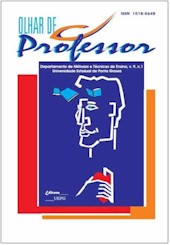Corpos deslocados em Mulheres Alteradas
Contenido principal del artículo
Resumen
Assumindo o corpo como ponto de encontro entre história, natureza, ciência e cultura, como um constructo mutante, passível de intervenções, engendrado em redes de poder e controle, produzido pela linguagem e dotado de significação, nos encontramos presentificados no mundo. Nosso contexto “pós-moderno” apresenta-se conflituoso e ambíguo, pois se revela ao mesmo tempo repressor e libertador, estando a todo tempo a dizer de nós, de nosso corpo e de nossos comportamentos, determinando e representando nossa experiência como seres humanos. Assim, através dos aparatos midiáticos, discursos são veiculados e destinados à regulação do sujeito através de sua identificação ou não com determinadas verdades construídas, ou através de efeitos de verdade. Atendendo à lógica capitalista do mercado de consumo, a mídia contribui para uma visão de corpo como artefato sócio-econômico-cultural que, ao ser constantemente construído e reconstruído na discursividade, se concretiza. A partir de tais entendimentos localizamos a obra da cartunista argentina Maitena como oblematizadora da questão do corpo, pois retrata sua provisoriedade de forma satírica.


